When Earplugs Become Annoying: The Occlusion Effect
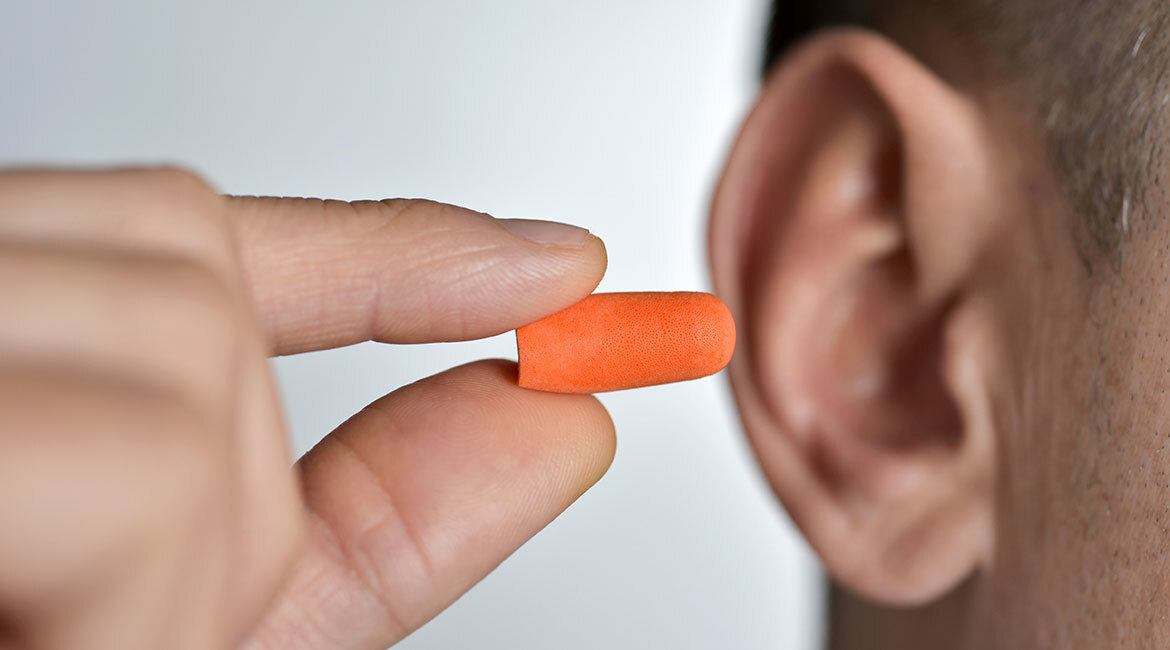
Purchased from Adobestock. Copyright.
If you occlude your ears with your fingers and read this sentence aloud, you will surely find your voice sounds more booming than usual. This phenomenon is called the occlusion effect - the amplification of physiological sounds in the occluded earcanal. The occlusion effect makes earplug wearers uncomfortable and can lead to incorrect and/or inconsistent use of earplugs. Several models were proposed to investigate this phenomenon in the literature. Here, we present the first numerical whole head model dedicated to studying the occlusion effect. With this model, we were able to highlight how biological tissue material properties, which vary from one individual to another, influence the occlusion effect. By doing so, we are getting closer to understanding why people perceive the occlusion effect differently. Keywords: occlusion effect, acoustic discomfort, earplug, hearing protection
Discomfort Varying from One Person to the Next
People frequently exposed to hazardous noise generally use hearing protection devices (e.g., earmuff, earplug) in order to prevent noise-induced hearing loss. However, hearing protection devices are sometimes used incorrectly and/or inconsistently because of their discomfort. The acoustic dimension of discomfort is partially related to the occlusion effect. This effect refers to the increased perception of body-conducted physiological sounds like our own voice, breathing, chewing, and heartbeat, which are transmitted into the earcanal. You can try to hear these sounds by simply occluding your earcanals with your fingers. The occlusion effect is especially significant at low frequencies for earplug-type hearing protection devices. It can be quantified subjectively or objectively. The objective occlusion effect is the difference between noise levels (in decibels) assessed at the eardrum position in the occluded and open earcanals. This article presents the development of a numerical model to simulate the objective occlusion effect of earplugs, which accounts for the complex bone-conducted sound transmission paths through the human head. Simulation results show how the occlusion effect can be influenced by the material properties of human biological tissues, which constitute one of the reasons for the inter-individual variability of the occlusion effect observed in experiments on human participants.
Modelling the Occlusion Effect
For the purpose of simulating the objective occlusion effect, we developed a numerical human head model with an earcanal open, or occluded with a foam earplug. In the first step, the head of an adult participant was scanned using medical imaging techniques (see Figure 1(a)). From the stacks of scanned medical images (see Figure 1(b)) different anatomical structures in the head were identified. In the second step, using the image processing software Materialise Mimics and 3-Matics (Leuven, Belgium) the brain, cerebrospinal fluid, skull, soft tissues—including skin, fat, muscle, etc.—and auricular cartilages were segmented (see Figure 1(c)) and reconstructed in 3D.
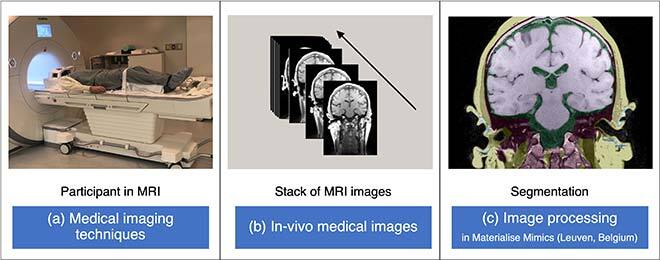
Figure 1 Process in obtaining the geometries of the anatomical structures in the head from medical images. MRI: magnetic resonance imaging
In the third step, geometrical models of the anatomical structures were imported into a finite element analysis, solver, and simulation software (COMSOL Multiphysics v.5.5., COMSOL AB, Sweden) to develop the numerical model of bone-conducted sound transmission through the human head (see Figure 2(a)) and ultimately simulate the objective occlusion effect. For the occluded earcanal, an earplug of simplified geometry (Figure 2(c)) was modeled in the earcanal (see Figure 2(b)). The biological tissues and earplug were defined by material properties obtained from the literature. Different material property sets were proposed for the biological tissues based on available data in the literature. The head was assumed to be immersed in air. To simulate a bone-conducted excitation usually applied with a bone conduction transducer—a type of vibrator for clinical purposes—a normal dynamic force per unit area was applied on the soft tissues covering the mastoid over an area corresponding to the location of the transducer. The calculations were carried out in a frequency range varying between 125 Hz and 1000 Hz in third octave bands.Definition: Third octave bands are widely used in engineering acoustics for convenient analysis. The upper frequency in each third octave band corresponds to the lower band frequency times the cube root of two.
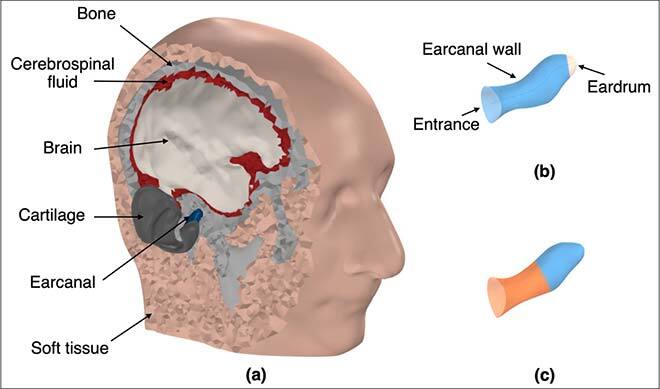
Figure 2 (a) Final reconstructed head with interior structures indicated; (b) Open earcanal; (c) Earcanal occluded with an earplug
Comparison between Simulation and Experiment
Figure 3 shows the corresponding simulated occlusion effects for various material property sets of the biological tissues (thin grey solid lines). The simulation results are found to be in good agreement with experimental data obtained on groups of participants in the literature (blue dash-dotted line and violet dashed line). They highlight the variability of the occlusion effect induced by the change in material properties of the biological tissues. In other words, different people experience different levels of the occlusion effect in practice, which can be partially explained by the differences in material properties of their biological tissues. It can also be observed that the variability of simulation results is lower than the variability of experimental data. This is because in experimental measurements on human subjects, the head (ear) geometry, location of the bone conduction transducer and position where noise level is measured in the earcanal cannot be fully controlled. On the contrary, in the simulations, factors other than the material properties of tissues are considered as fixed.
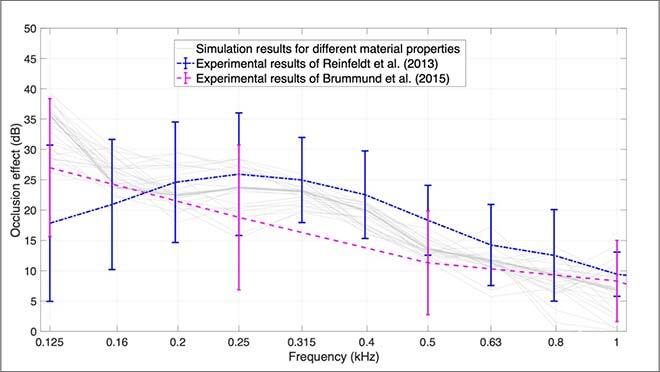
Figure 3 Simulated occlusion effects (in decibels) shown in third octave bands for various material property sets of the biological tissues in comparison with the experimental data obtained on groups of participants in the literature
Outlook
An artificial head was physically fabricated (Figure 4) based on the same geometry as the numerical head model to measure the occlusion effect of earplugs in practice. Presently, it is still necessary to work on the materials used in the fabrication of this artificial head in order to obtain an improved prediction of the occlusion effect. In the long term, our research group is expecting to have robust virtual and physical testers to assess the occlusion effect of wearing hearing protection devices.
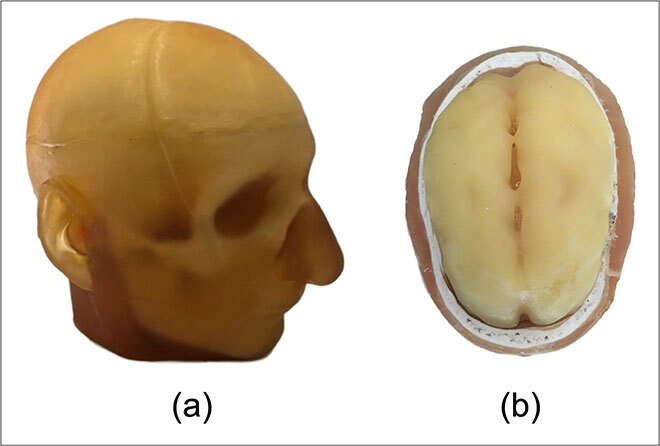
Figure 4 (a) Exterior and (b) interior of the artificial head fabricated based on the same geometry as the numerical head model
Additional Information
For more information regarding the numerical human head model, please refer to the following article:
Xu, H., Sgard, F., Carillo, K., Wagnac, É., & de Guise, J. (2021). Simulation of the objective occlusion effect induced by bone-conducted stimulation using a three-dimensional finite-element model of a human head. The Journal of the Acoustical Society of America, 150(5), 4018-4030.
For the history of the occlusion effect from its discovery to the present day, please refer to the following article:
When Hearing our own Voice is Disturbing: the Occlusion Effect.



